Merging Neutron Stars Deliver Deathblow To Dark Matter And Dark Energy Alternatives

Don’t believe in dark matter or dark energy? Your view of the Universe just got a lot more difficult.
If you ask an astrophysicist what’s the greatest puzzle in the Universe today, two of the most common answers you’ll get are dark matter and dark energy. The stuff that makes up everything we know of here on Earth, atoms, which is in turn made up of other fundamental particles, adds up to only around 5% of the cosmic energy budget. Either 95% of the energy in the Universe is in these two forms, dark matter and dark energy, that have never been directly detected, or something is wrong with our current picture of the Universe. These alternatives have been explored at length, with many options leading to slightly different physical consequences. With the first observation of merging neutron stars, and signals in both gravitational waves and light from across the electromagnetic spectrum arriving, a huge slew of these options have just been ruled out. When put to the test, dark matter and dark energy both survive.
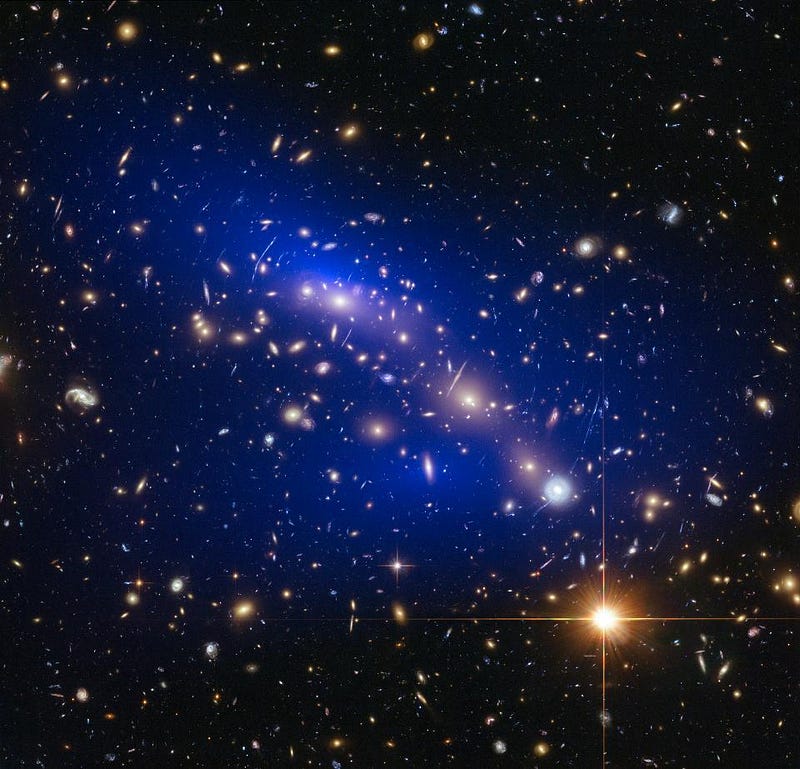
There are a few major puzzles in astrophysics and cosmology that dark matter and dark energy were designed to solve. For dark matter, they largely relate to how galaxies form, rotate, and cluster together; for dark energy, they’re about the expansion rate of the Universe and how it evolves over time. If you make an appropriate modification to your theory of gravity, you can alter some of those observables without introducing dark matter and/or dark energy. The hope of those working on these alternatives is that the right modification will be found — one that also makes new predictions distinct from those of dark matter/dark energy — and they can be put to the test.
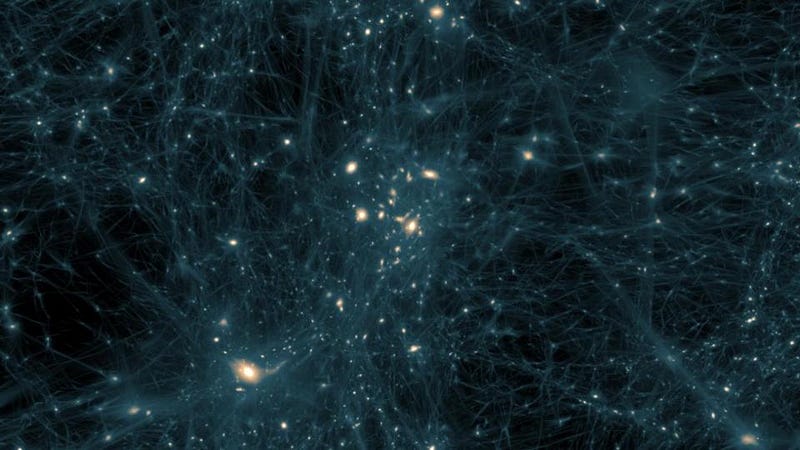
But modifying gravity, either to account for dark matter or dark energy (much less both), is a game you have to play very carefully. Einstein’s theory of General Relativity has already been tested quite rigorously, and its predictions have been borne out every time. If you modify gravity, you’re altering that theory, so you have to do it in a way that doesn’t impinge upon the observations and measurements that have already taken place. Many of the options out there have, therefore, ventured into a regime that hadn’t been tested very well: one that allowed the speed of gravity to vary. In Einstein’s theory, the speed of gravity equals the speed of light, exactly, and at all times. But in many alternatives, that assumption gets tweaked.
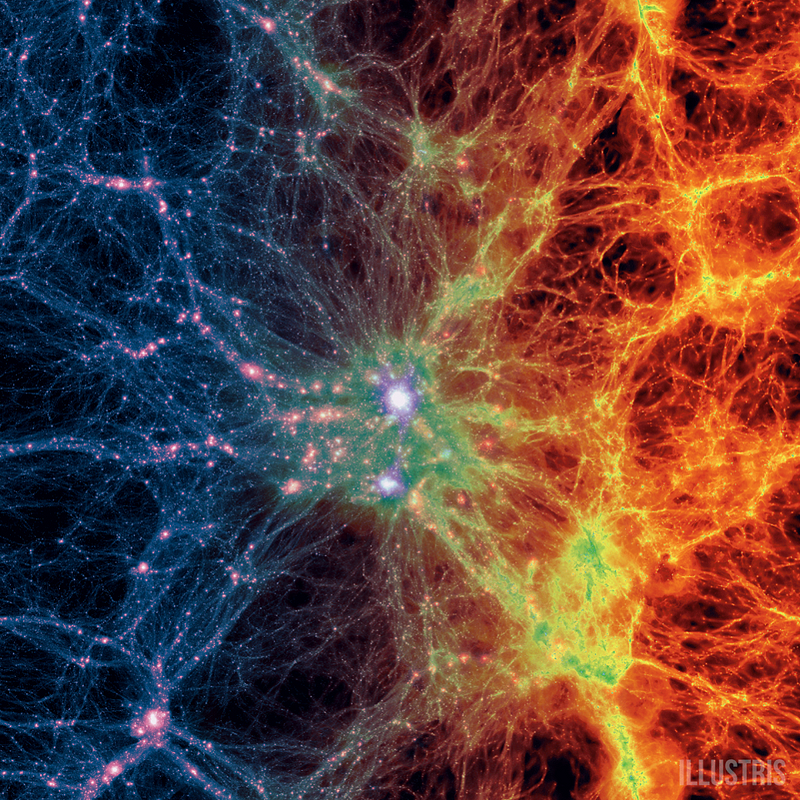
Dark energy is generally assumed to be a cosmological constant, where the speed of light and the speed of gravity are both constants (and equal to one another) as well. Alternative formulations instead add something slightly more complex: a scalar field or a set of additional fields. This is a generic feature of modifications in models, such as the covariant Galileon, massive gravity, Einstein-Aether theories, TeVeS, and Hořava gravity. Many scenarios, depending on how the scalar field interacts with the standard “gravity” (tensor) field of General Relativity, give a speed of gravity that’s either different from the speed of light or that varies in time. But the fact that gamma rays and gravitational waves from the merging neutron star event GW170817 arrived within 1.7 seconds of one another means that the speed of gravity must equal the speed of light to better than 1 part in 1015.
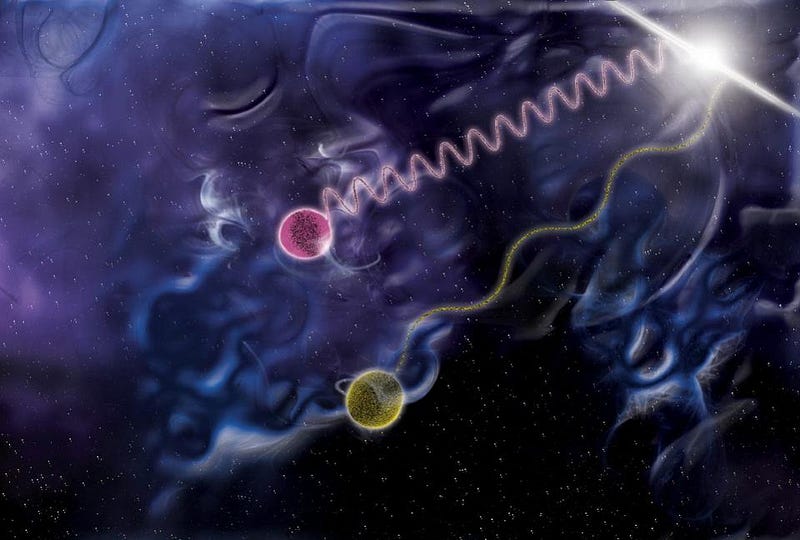
As a result, a huge slew of alternatives to standard General Relativity with standard dark energy are ruled out. The fact that an arrival-time difference of 1.7s for a light signal and a gravitational wave signal over a distance of 130 million light years is so minuscule means that the speed of gravity cannot vary with time, nor can it be systematically higher or lower than the speed of light. If you add a scalar field to a tensor theory of gravity, you get two generic effects:
- There’s generally a tensor speed excess term, which modifies (increases) the propagation speed of gravitational waves.
- The scale of the effective Planck mass changes over cosmic times, which alters the damping of the gravitational wave signal as the Universe expands.
The fact that the speed of light and the speed of gravity are equal to such high precision means that all theories that have this type of modification are highly constrained, and that most such models are largely ruled out.
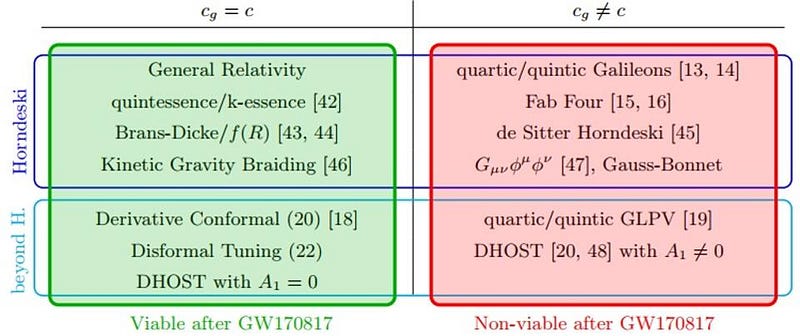
For dark matter, attempts to modify gravity get even worse. What most modifications generically do is change the force law between massive objects, which alters the gravitational potential in regions of spacetime containing mass. When objects traveling at the speed of light, like photons or gravitational waves, pass through that space, those signals get delayed according to the rules of General Relativity: the Shapiro time delay. From 130 million light years away, the amount of intervening matter ought to delay that signal by about three years, if the standard dark matter picture is correct. But if you’re modifying gravity in such a way that you get rid of dark matter, you vastly change the propagation properties of gravitational waves through space.
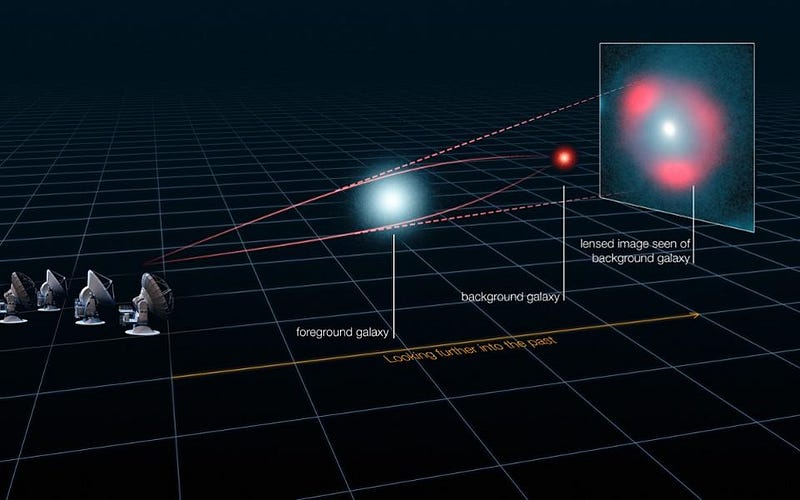
No-dark-matter modified gravity theories like Bekenstein’s TeVeS or Moffat’s MoG/Scalar-Tensor-Vector ideas have the property that gravitational waves propagate on different geodesics — a.k.a. different spacetime paths — from those followed by photons and neutrinos. In short, gravitational waves should travel along the paths defined by the normal matter alone, while the photons and neutrinos should travel along paths defined by the effective mass: the normal matter plus the effects that emulate dark matter. This would give a difference in arrival times between photons and gravitational waves by approximately 800 days, instead of the 1.7 seconds observed.
With the cross-correlation of gravitational waves and electromagnetic signals, these no-dark-matter scenarios are busted.
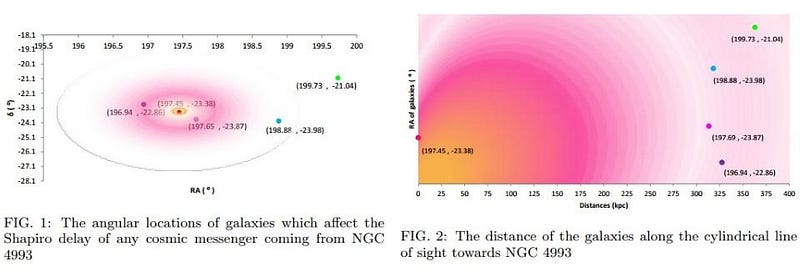
When gravitational waves and photons (electromagnetic waves) pass through space, they’re affected by the curvature and expansion of space in the exact same way. That is, as long as General Relativity is your theory of gravity. If you modify your theory of gravity — to try and eliminate the need for dark matter and/or dark energy, for example — then gravitational waves are affected only by the matter/mass part, while the modification effects hit photons and other particles. Because the gravitational waves and light signals from merging neutron stars arrived at the same time, they traveled at the same speeds through space, and were delayed by the same amounts: to within 1 part in a quadrillion. This level of precision is enough to rule out the leading contenders for a modified theory of gravity without dark matter.
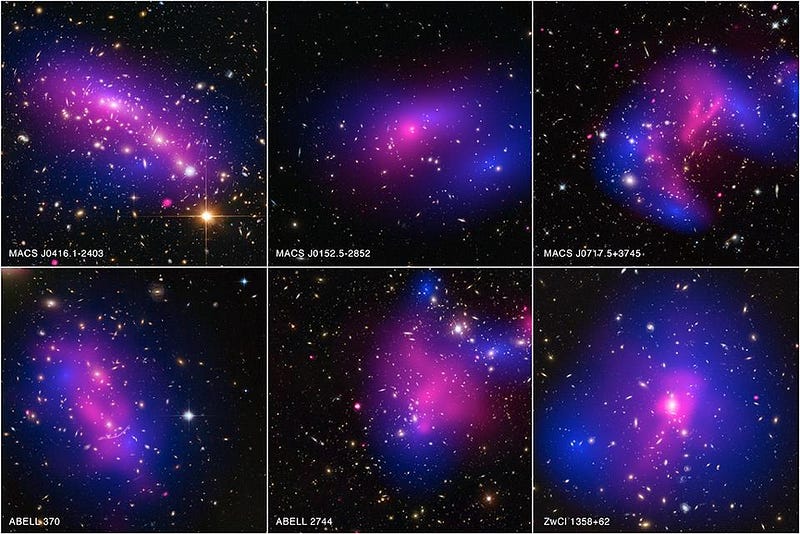
There are still a few contrived models out there that may hold hope for modified gravity, like non-local theories of gravity (where gravitational effects and the locations of masses don’t match up) or theories where gravitational waves and electromagnetic waves obey two different sets of rules. But even these ideas are severely constrained by our new gravitational wave observations, and are required to become closer-and-closer mimics to the effects of dark matter and dark energy in order to survive. Modified gravity isn’t dead yet, but many of its greatest hopes have just been dashed. Einstein, however, with his theory in its original, unmodified form, still survives.
Ethan Siegel is the author of Beyond the Galaxy and Treknology. You can pre-order his third book, currently in development: the Encyclopaedia Cosmologica.




